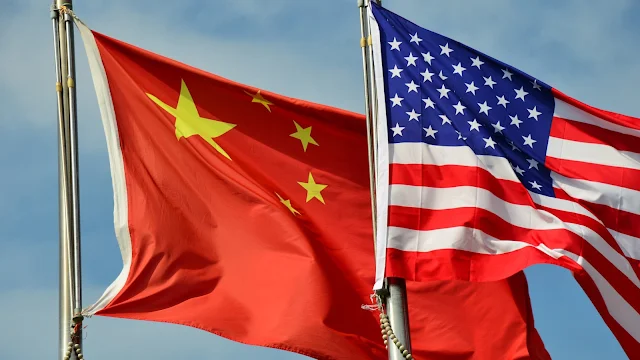US and China Come to a 90-Day Tariff Break
There appears to be a breather in the trade war between the United States and China. Diplomats from both countries have come to a 90-day agreement on easing the high tariffs they put on each other's goods in April by quite a bit. It's more like a time-out while they try to hammer out a more permanent trade deal.
What's Changing (For Now)
This agreement, reached over the weekend in Geneva, brings some quite dramatic, if only temporary, changes. The US tariffs on much of China's imports, which had risen to an astronomical 145 percent, will be cut to 30 percent. On the other hand, China is cutting its tariffs on American goods from 125 percent all the way down to 10 percent. That's a whopping drop of 115 percentage points from each.
Naturally, leaders are spinning their own versions. President Trump talked about a "total reset," and China's Commerce Ministry hoped the US would back down on its unilateral tariff hikes.
One Big Thing Isn't Changing: The $800 Loophole
It's worth noting that this 90-day truce *does not* reverse the recent 'de minimis' loophole shutdown. That policy change, which went into effect May 2nd, stopped companies like Temu and Shein from sending packages under $800 directly to US consumers without paying any import tariffs. That aspect of the trade dynamic seems to be here to stay, so those small, direct shipments might continue to be a source of trouble and cost.
Why Does This Matter? The Real-World Impact
These tariffs weren't mere paper figures. When the higher rates became operational along with the phaseout of the $800 exemption, it was a disaster. Large Chinese e-commerce websites like Shein, Temu, and AliExpress were forced to hold back shipping directly to the US. Consumers found their parcels stuck, sometimes with additional charges that outpriced the product itself. Companies relying on inexpensive Chinese components, like Adafruit (who faced a $36,000 tariff charge on one shipment), were in serious trouble that would cause us all to shell out more.
Uncertainty Is the Name of the Game
While this 90-day pause might bring some temporary relief and optimism (as Treasury Secretary Scott Bessent noted, neither party seems to want a complete "decoupling"), nobody really knows what happens next. It's still more expensive to import Chinese goods than it was a few months ago, and whether these lowered tariffs stick around, change, or disappear completely after 90 days is anyone's guess.
This period of trade instability may have long-term effects too. Take the case of China's recent embargo on rare earth metal exports, for instance. It just revealed how much the US relies on China for these critical resources. It has likely made the US government and companies consider alternative sources seriously, for good measure.
Therefore, although we can enjoy a short-term reduction in tariff rates, the overall US-China trade politics picture remains mixed and uncertain. Watch this space – the next 90 days will be telling.
